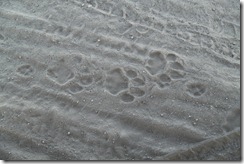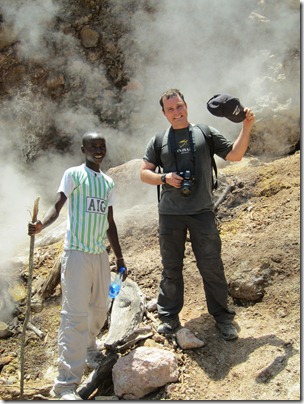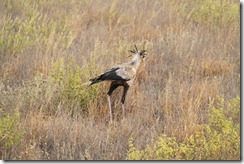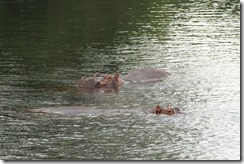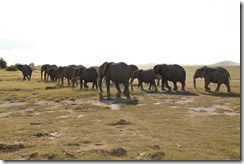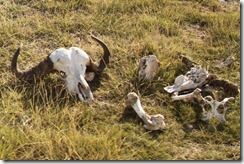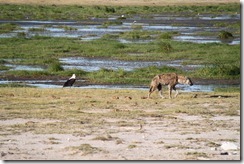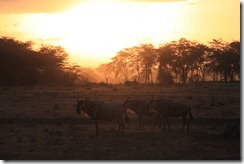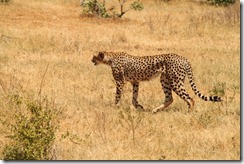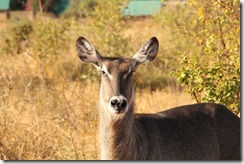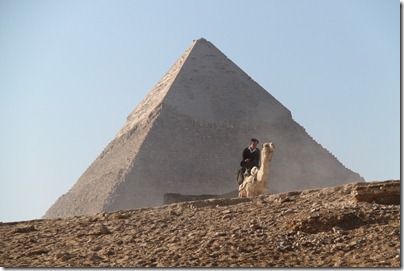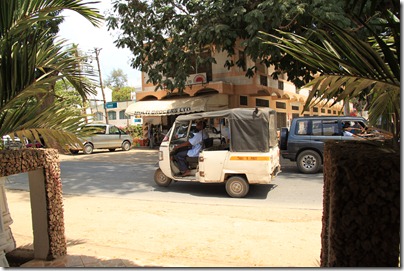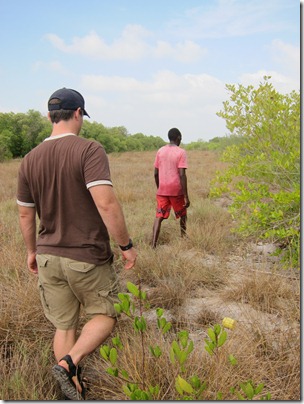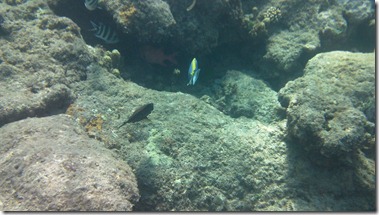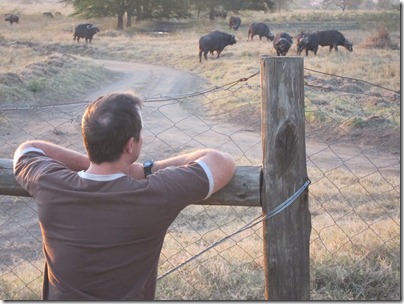 The “Startled Muzungu†is (apparently) a face I make when something has gone terribly wrong in our planning (or lack thereof) and it’s not clear that there is any sort of easy way out of whatever mess we’ve gotten ourselves into. The Startled Muzungu has made an appearance twice on this trip: once on our first day when we slept through all of the boarding announcements for our flight from Frankfurt to Cairo and the plane was moments away from pulling away from the gate, and again yesterday when we first arrived at our lodging within Lake Nakuru National Park.
The “Startled Muzungu†is (apparently) a face I make when something has gone terribly wrong in our planning (or lack thereof) and it’s not clear that there is any sort of easy way out of whatever mess we’ve gotten ourselves into. The Startled Muzungu has made an appearance twice on this trip: once on our first day when we slept through all of the boarding announcements for our flight from Frankfurt to Cairo and the plane was moments away from pulling away from the gate, and again yesterday when we first arrived at our lodging within Lake Nakuru National Park.
We’d spent the previous night at a decent hotel in the town of Nakuru and had made arrangements to spend the next two nights at the Wildlife Clubs of Kenya Guest Houses inside the park itself. We arranged an early-morning game drive that would drop us off at the lodge, where we would spend the next day and a half relaxing while herds of water buffalo meander by the lodge’s fence.
We were getting quite hungry by 2pm when we were dropped off at the guest house. We unloaded our bags from the safari truck and waved goodbye to our driver as he left through the locked fence that keeps guests in and wildlife out. Eager for a bite to eat, we followed the host as he took us on a tour of our cottage.
“Here’s your room…here’s the eating area…here’s the kitchen…â€
“Looks great! Is there a restaurant?â€
Silence.
“No. You cook yourself.â€
Silence. Stares. The Startled Muzungu.
“We have no food with us.â€
Silence. Stern, annoyed look from host. I start working on plan to stretch a few slices of beef jerky and some Tic-Tacs through two days.
Now, to be fair to us, the Lonely Planet makes no mention of needing to cook for yourself, and every other lodge we’ve stayed at has had some sort of restaurant, which is important when you’re sealed off from civilization and surrounded by wild animals.
“What is your driver’s phone number?â€
Thankfully we copied it down.
“I’ll call him. Maybe he can take you into town.â€
Which, thankfully, he did. We raced along the bumpy road out of the park and into the city to Tusky’s supermarket.
“Shop fast. They may not let us back in if we are late.â€
20 minutes later we were leaving Tusky’s with three big bags full of supplies, including important staples like Skittles, popcorn, chocolate bars, and ice cream. (Some real food, too.)
And now we’re here, very comfortable and enjoying the meandering buffalo.
Yesterday’s game drive was enjoyable. The lake is home to a dizzying array of birds, and we finally saw some white rhinos which allowed us to check off the last of the Big 5. (No sightings of the much more elusive and endangered black rhino.) We also had another fabulous lion encounter. On to some pictures!









